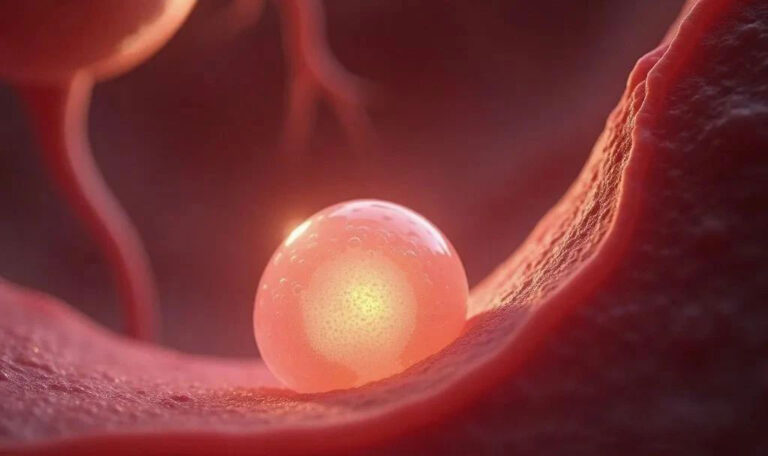Genetic variation in early miscarriage and coping strategies for surrogate mothers

Introduction: When New Life Encounters a Genetic “Reef”
When 38-year-old Spanish surrogate mother Elena Martínez suffered her second 8-week miscarriage, genetic testing revealed that the fetus carried a lethal mutation in the DHCR7 gene in a pure form – a classic example of what the Icelandic deCODE team reveals in their Nature study: 1 in 136 pregnancies worldwide are associated with this type of ‘genetic’ mutation. One in every 136 pregnancies worldwide results in a miscarriage due to this type of “genetic misspelling”.37 This whole-genome sequencing study of 1,007 fetal samples provides the first systematic picture of the genetic panorama of early miscarriage in surrogate mothers: 55% of cases result from genetic variants, with maternal errors accounting for more than 70% of the cases.

I. Genetic fog: four major discoveries that break through cognition
(i) Chromosomal anomalies as “top killers
Aneuploidy dominates: 44.1% of miscarriage cases have abnormal chromosome numbers, with trisomy 16 (9.2%) and monosomy X (9.9%) being the most common.
Hidden crisis of triploidy: 6.4% of cases are triploid (69 chromosomes), of which 19/30 originate from maternal meiotic errors (early separation of sister chromatids).
(ii) The great destructive power of small mutations
SSV (pathogenic small sequence variant):
→ 3-fold enrichment in chromosomally normal aborted fetuses
→ Mutation in DHCR7 gene leads to impaired cholesterol synthesis, triggering lethal Smith-Lemley-Opitz syndrome.
Clinical warning: about 6% of “unexplained abortions” are actually caused by SSVs, which are not recognized by conventional karyotyping.
(iii) Dynamic origins of maternal mutations
Time-stamped evidence: 6.6% of de novo mutations of maternal origin occur in meiotic anaphase I (before sister chromatid formation), with cumulative risk with age.
Structural mutation chain reaction:
Oocyte DNA double-strand breaks –> DNA repair defects
DNA repair defects –> chromosome 15/16 translocations
Chromosome translocations –> accompanied by de novo mutation clusters
(iv) Placental-fetal genomic “paradox”.
Placenta-specific mutations: FBLN1 gene splice-site deletion exclusively in placental tissues, revealing that placental failure may be an independent abortion trigger.
Dr. James Wilson, University of Oxford, explains, “This study overturns the perception that ‘normal chromosomes are safe’ – that small errors in gene sequence are enough to destroy the blueprint for life. “
Second, the clinical revolution: the precise prevention and control strategy for surrogate mothers
(A) Genetic testing upgrade path
| Testing technology | Traditional karyotyping | Whole genome sequencing (WGS) |
|---|---|---|
| resolution (of a photo) | >5Mb | single base |
| SSV detection rate | 0% | 92% |
| population (esp. of a group of people) | All abortion cases | ≥2 surrogate mothers with miscarriages |
(ii) Maternal Risk Cracking Program
Egg Quality Optimization:
Coenzyme Q10 600mg/day → Repair oocyte mitochondrial function
Melatonin 3mg/night → Remove free radicals during meiosis.
Preimplantation Genetic Diagnosis (PGT-M):
→ for couples carrying recessive disease-causing genes (e.g., CPLANE1 compound heterozygosity)
→ healthy embryos screened with >99% accuracy.
(iii) Triploidy prevention in practice
Fertilization monitoring technology:
→ intracytoplasmic monosperm injection (ICSI) to block polysperm fertilization
→ time-lapse photography system to screen normal fertilized eggs.
III. Technological Frontier: Breakthrough from Diagnosis to Intervention
(i) Quantitative mutation load model
Paternal age effect: +1.63 new mutations per 1 year increase in father’s age (maternal +0.44)
Risk formula: probability of miscarriage = (maternal age² × 0.2) + (paternal age × 0.05) + number of previous miscarriages × 0.3
(ii) Iteration of preimplantation screening techniques
| Type of technology | Detection range | Surrogate Mother Applicable People |
|---|---|---|
| PGT-A | chromosome aneuploidy (in cell biology) | ≥35 years or recurrent abortion |
| PGT-M | monogenic disease | Couples with pathogenic SSV |
| PGT-SR | structural rearrangement | Equilibrium translocation carriers |
(iii) Placenta-fetus dual genome analysis
Independent sampling criteria:
→ chorionic villus samples need to have a paternal component of >25% (to prevent maternal contamination)
→ Simultaneous detection of differential mutations in fetal tissue and placenta.
IV. Surrogate mother’s action list: scientific response to genetic risk
(a) Genetic triple testing is mandatory after miscarriage
Fetal whole genome sequencing: identify SSV/CNV and other hidden mutations
Couple carrier screening: focus on screening DHCR7, CPLANE1 and other high-risk genes
Maternal coagulation immune profile: antiphospholipid antibody + NK cell activity test
(ii) Pre-conception intervention strategies
Ovarian preconditioning (for those with AMH <1.1):
→ G-CSF injection in the luteal phase → boosting the number of eggs acquired by 2.1.
Embryo optimization techniques:
● Time-lapse imaging system (Time-lapse) to screen division-synchronized embryos
● Artificial intelligence prediction model with AUC value of 0.91.
(C) Three-generation IVF technology selection tree
A、 ≥2 miscarriages surrogate mother –> genetic test result –> detection of SSV: PGT-M cycle
B、≥2 miscarriages surrogate mother –> genetic test result –> chromosomal balanced translocation: PGT-SR cycle
C、≥2 miscarried surrogate mothers –> Genetic test results –> Unspecified etiology: PGT-A + ERA endometrial testing
V. Ethics and Hope: Redefining the Beginning of Life
“Every early abortion is an invisible screening of the human gene pool-eliminating deadly mutations and preserving hope for survival.” The assertion of Dr. Emily Roberts of Harvard Medical School reveals the cruelty and wisdom of natural selection.
A new formula for fertility for surrogate mothers:
Successful Pregnancy = (Maternal Genomic Stability × Paternal Mutation Load Control) ÷ Environmental Stress
Scientific Intervention = PGT Technology × Personalized Transplantation Strategies
The Future is Here:
Dawn of Gene Editing: CRISPR-Cas9 Repair of Disease-Causing Mutations in Embryos (Clinical Trial Stage)
Oocyte Regeneration Technology: Inducing Pluripotent Stem Cells to Differentiate into Eggs (Primate Experiment Success)






